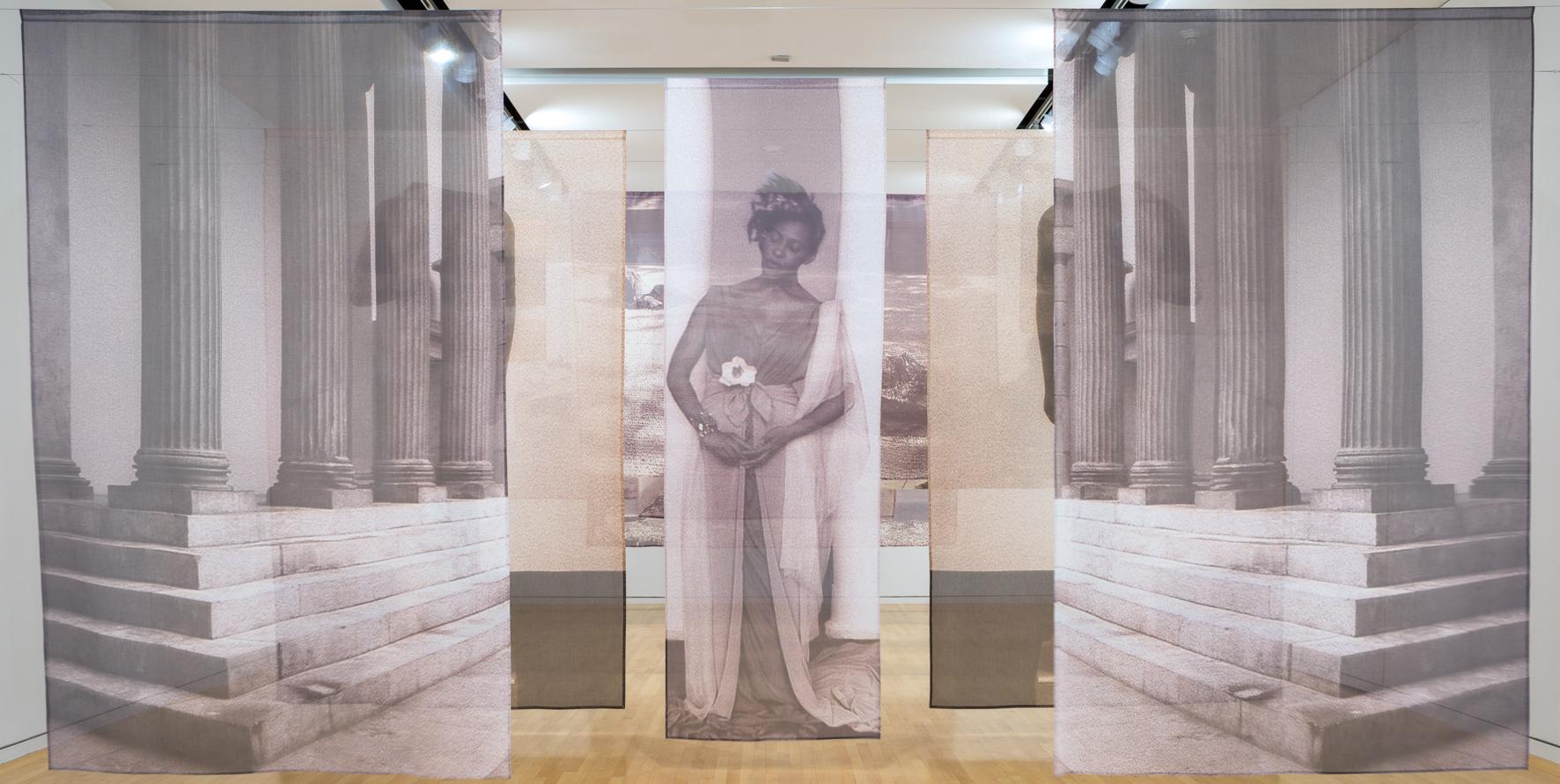
1 minute read
Omar Victor Diop — Ayuba Suleiman Diallo, from the series Project Diaspora
Omar Victor Diop (Senegalese, born 1980)
Ayuba Suleiman Diallo, from the series Project Diaspora 2014 Inkjet print 47 ¼ x 31 ½ in Mary and Leigh Block Museum of Art, Northwestern University, purchase with funds from the Irwin and Andra S. Press Collection Endowment, 2016.9.1
In his series Project Diaspora, artist Omar Victor Diop poses as notable figures from the African diaspora in Europe in the 15th through 19th centuries. Here Diop stages a photograph in the style of the first known British portrait of a person who was enslaved and later freed: Ayuba Suleiman Diallo (1701–73) as depicted by artist William Hoare in 1733. Diallo was a highly educated man from a family of high-ranking Muslim clerics in modern-day Senegal who, while on a journey to sell enslaved people, was himself captured and sold into slavery. He was eventually sent to a plantation in Maryland where he escaped and was subsequently jailed. While imprisoned, Diallo wrote a series of letters that convinced a superior in the Royal African Company to send him to London, where he was celebrated for his intellect among the elite before returning to Africa. Diallo was one of very few enslaved people able to return to their homeland, making his story an exceptional one.
Diop’s vibrant photograph brings Diallo’s story vividly into the present. Diop represents himself as the subject holding a soccer ball, drawing a connection between the experiences of the historical figure and African soccer players in Europe, who are both celebrated and subjected to intense racism. In How the Word Is Passed, Clint Smith points out how the vestiges of slavery continue to shape contemporary experiences, a point made visually through the artist’s connection of experiences across time.

William Hoare (British, 1707–1792) Ayuba Suleiman Diallo
1733 Oil on canvas 30 in. x 25 in. Qatar Museums Authority: Doha: Qatar, 2010 Image Source: Wikimedia Commons










